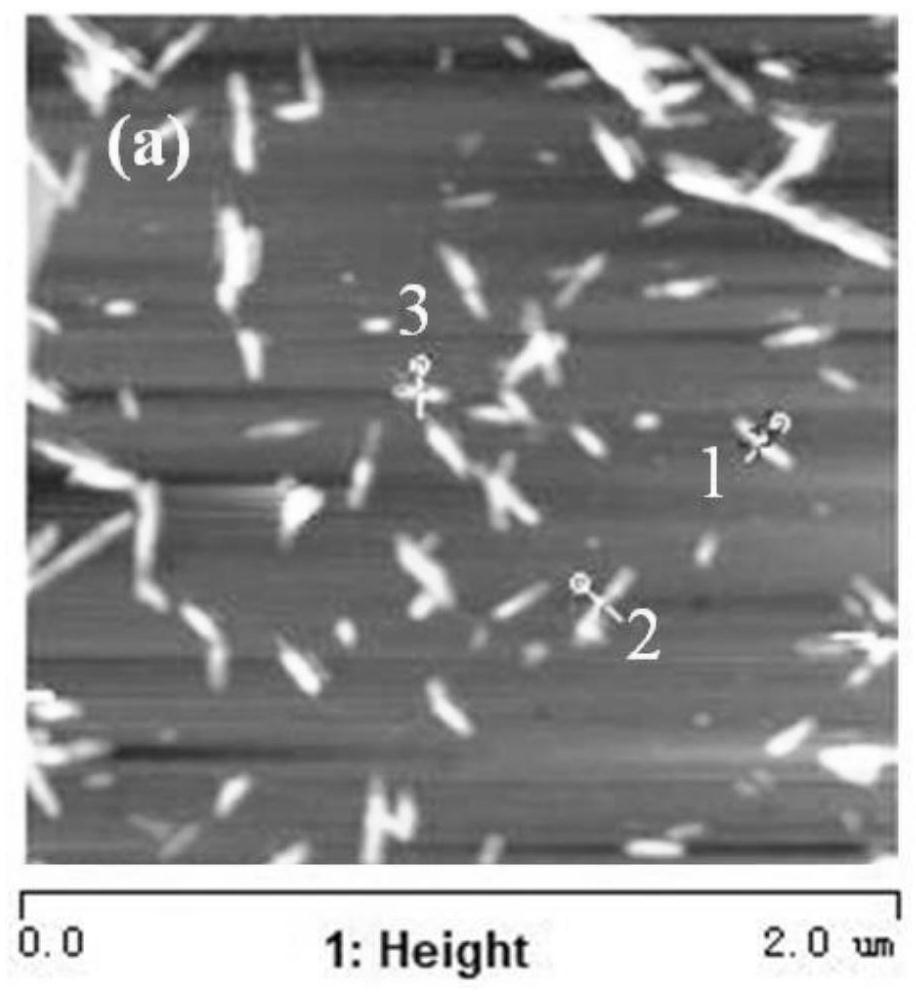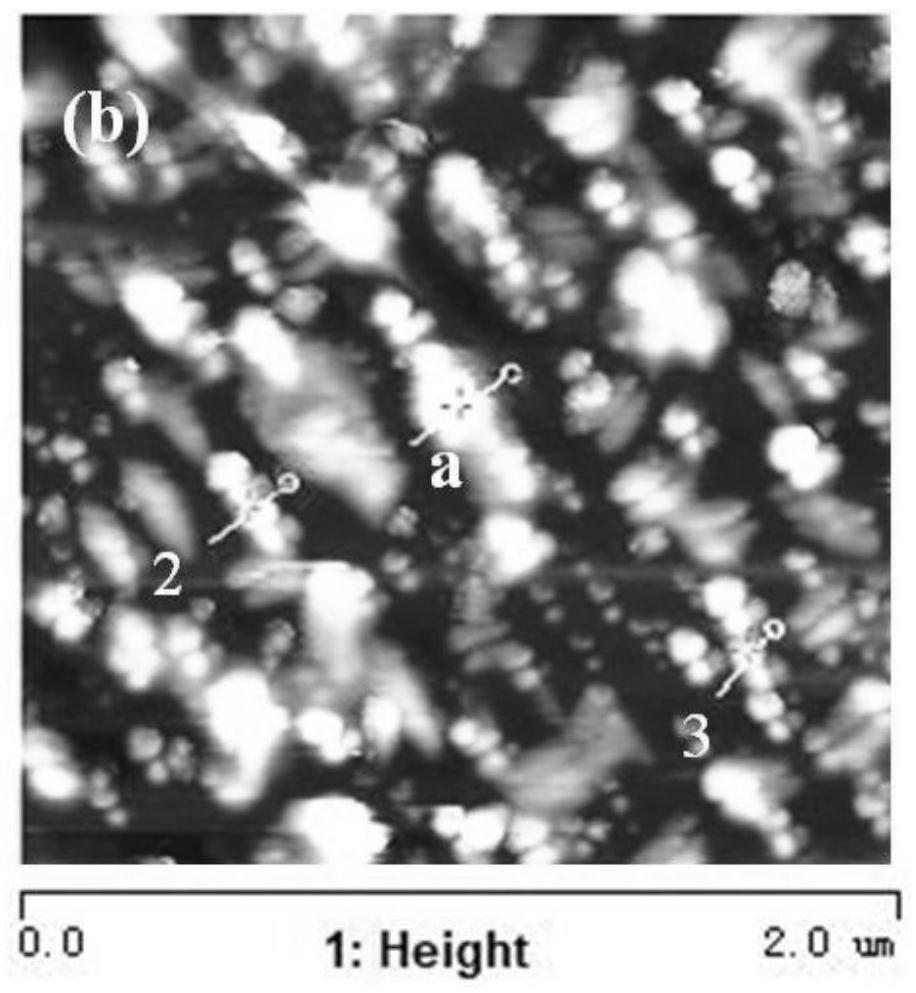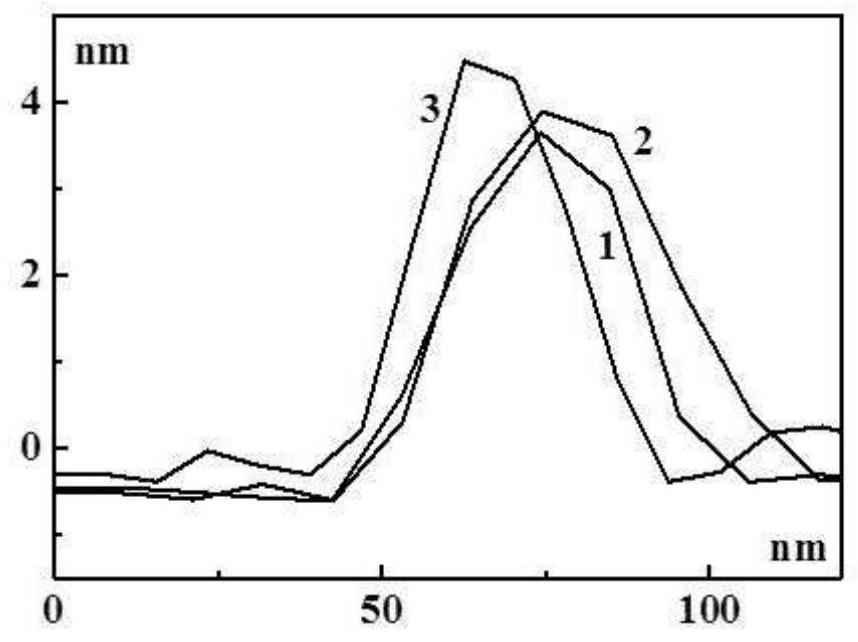A kind of cellulose nanocrystal composite material and method modified by polylactic acid/nucleating agent
A technology of composite materials and cellulose, which is applied in the field of composite materials and their preparation, can solve problems such as unfavorable industrial production and complex chemical modification process, and achieve the effects of high crystallinity, improved mechanical properties, and improved thermal deformation resistance
- Summary
- Abstract
- Description
- Claims
- Application Information
AI Technical Summary
Problems solved by technology
Method used
Image
Examples
Embodiment 1
[0035] Step 1: Modification of cellulose nanocrystals
[0036] Weigh 75 parts by weight of cellulose nanocrystals and 25 parts by weight of N,N'-ethylene bisstearamide, ultrasonically disperse the two in DMSO for 60 minutes, filter with suction, put the product in an oven, and dry at 60°C 8 hours; Take out and grind, obtain the cellulose nanocrystal (mCNCs) of nucleating agent modification;
[0037] Step 2: Preparation of PLA / mCNCs composites
[0038] Weigh a certain amount of polylactic acid (2003D), weigh the modified cellulose according to 2% of the mass of polylactic acid, premix it in a high-speed premixer, and then add it to a twin-screw extruder for blending to prepare polylactic acid / mCNCs composite material.
[0039] Get embodiment 1 part composite material sample and adopt WAXD to detect the crystallinity of composite material, all the other samples are injection molded into standard test specimen in injection molding machine, and carry out tensile strength, elonga...
Embodiment 2
[0041]The modification of cellulose nanocrystals in Example 2 is the same as in Example 1, except that when preparing the polylactic acid / mCNCs composite material, the mass ratio of polylactic acid and modified cellulose is 1:0.03.
[0042] Get embodiment 2 part composite material sample and adopt WAXD to detect the crystallinity of composite material, all the other samples are injection molded into standard test sample bar in injection molding machine, and carry out tensile strength, elongation at break, Charpy notched impact strength detection respectively, The results are shown in Table 1.
Embodiment 3
[0044] Step 1: Modification of cellulose nanocrystals
[0045] Weigh 50 parts by weight of cellulose nanocrystals and 50 parts by weight of dibenzohydrazide sebacic acid, ultrasonically disperse the two in DMF for 60 minutes, filter with suction, put the product in an oven, and dry at 60°C for 12 hours; Take out and grind to obtain cellulose nanocrystals (mCNCs) modified by nucleating agent;
[0046] Step 2: Preparation of PLA / mCNCs composites
[0047] Weigh a certain amount of polylactic acid (2003D), weigh the modified cellulose according to 1% of the mass of polylactic acid, premix it in a high-speed premixer, and then add it to a twin-screw extruder for blending to prepare polylactic acid / mCNCs composite material.
[0048] Get embodiment 3 part composite material sample and adopt WAXD to detect the crystallinity of composite material, all the other samples are injection molded into standard test sample in injection molding machine, and carry out tensile strength, elongat...
PUM
| Property | Measurement | Unit |
|---|---|---|
| elastic modulus | aaaaa | aaaaa |
| diameter | aaaaa | aaaaa |
Abstract
Description
Claims
Application Information
 Login to View More
Login to View More - R&D
- Intellectual Property
- Life Sciences
- Materials
- Tech Scout
- Unparalleled Data Quality
- Higher Quality Content
- 60% Fewer Hallucinations
Browse by: Latest US Patents, China's latest patents, Technical Efficacy Thesaurus, Application Domain, Technology Topic, Popular Technical Reports.
© 2025 PatSnap. All rights reserved.Legal|Privacy policy|Modern Slavery Act Transparency Statement|Sitemap|About US| Contact US: help@patsnap.com



